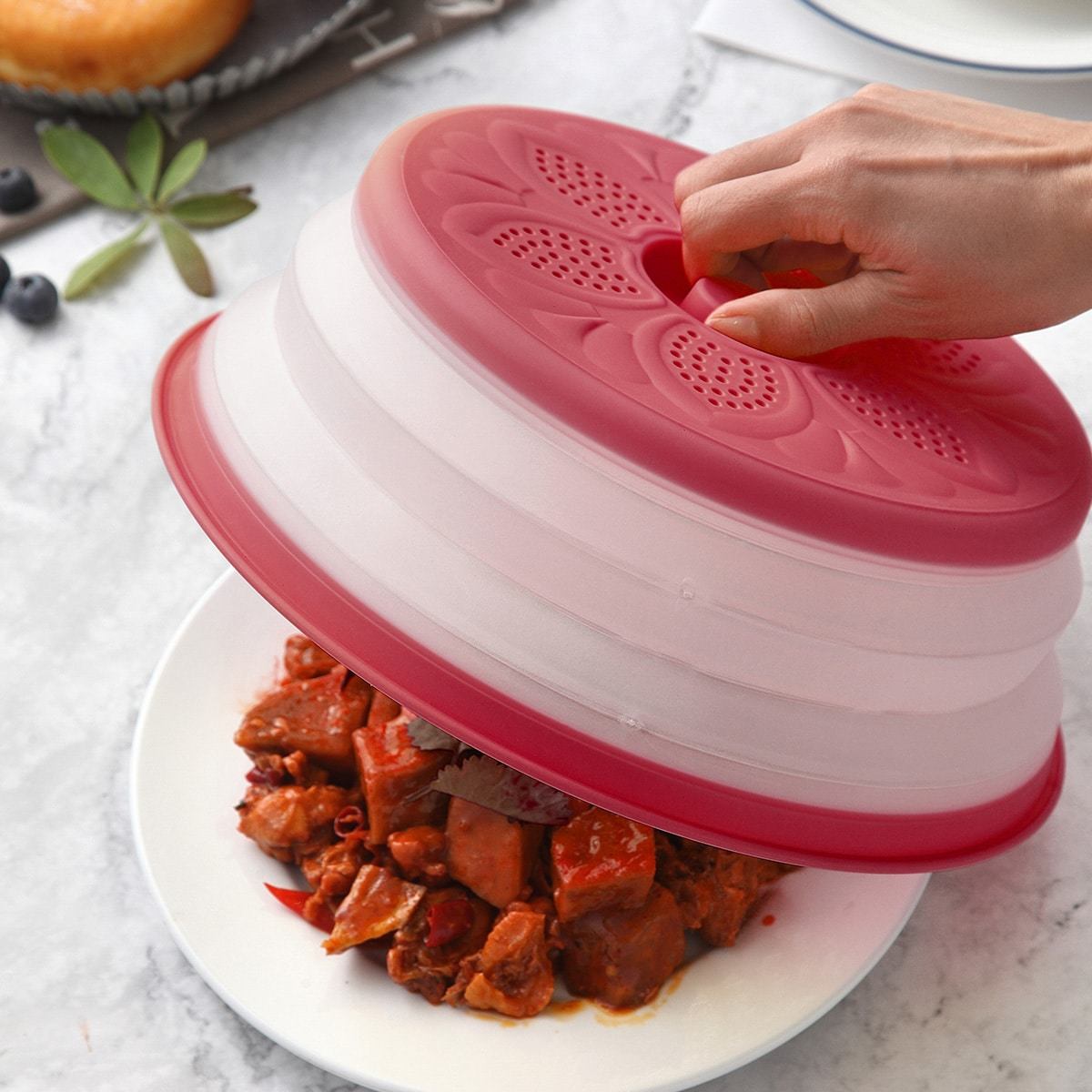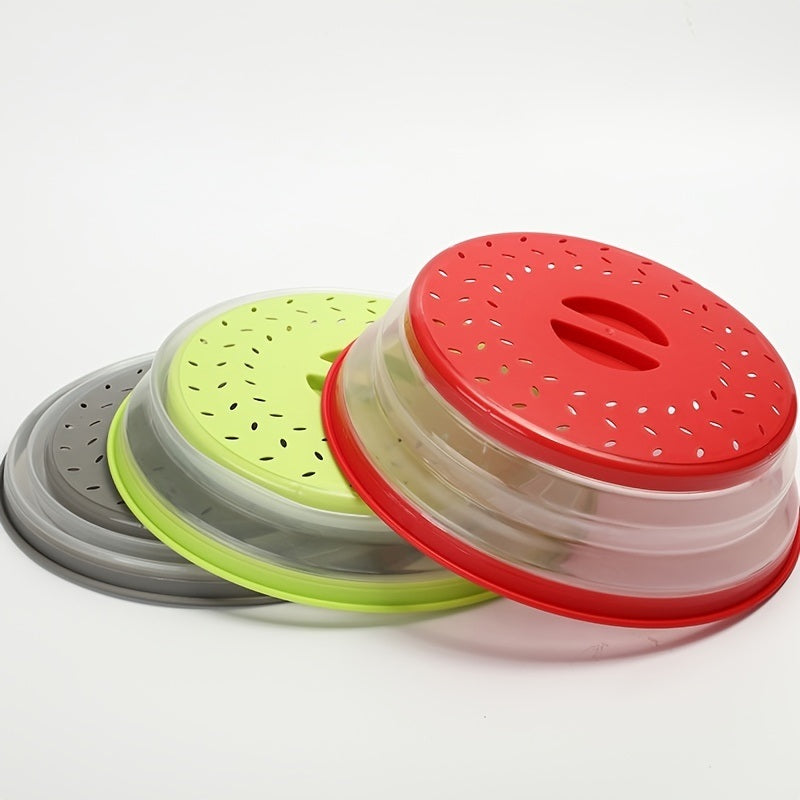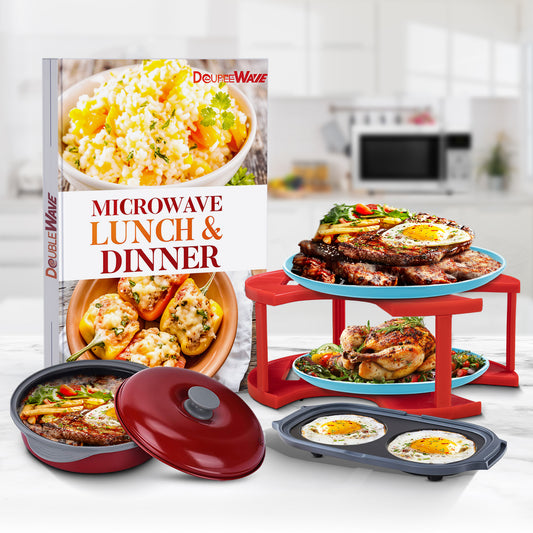Can You Microwave Silicone? [Answered]
Can You Microwave Silicone? Yes, you can microwave silicone.
From frozen pizza to last night's leftovers, we use the microwave to heat up and cook a huge assortment of quick meals. This handy appliance is so popular that approximately 90 percent of all Americans own one.
While there are certain things you know you can stick in the microwave, there are other things you should never put inside this appliance.
So, can you microwave silicone? This article will help you learn more about whether or not you can use silicone for your microwave cooking needs.
Silicone Defined
Let's start by identifying exactly what silicone is. This material is a synthetic polymer that typically contains bonded silicone and oxygen along with other elements including hydrogen and carbon.
When combined, these components create a soft, flexible rubbery material that you can use for a range of applications. Silicone is highly heat resistant and is extremely safe to use for cooking an assortment of different foods.
Its flexibility means that your food won't stick to the material, and it's extremely durable, too. Silicone is also really easy to clean, making it a favorite choice for many home cooks and bakers.
Silicone was deemed to be a food-safe material all the way back in 1979 when the FDA approved it for this purpose. Today, you can find this flexible, colorful material in a wide array of different formats for use in the kitchen and more.
Cooking with Silicone
Silicone is well-known for its resistance to extreme temperatures. It is generally freezer-safe and oven-safe, making it ideal for recipes that require temperature shifts, like freezing homemade ice cream or baking muffins. However, silicone’s oven safety typically maxes out at 428°F (220°C). Exceeding this limit can cause silicone to degrade, releasing unpleasant odors and potentially compromising the safety of your cookware.
When using silicone molds or baking sheets, always double-check the manufacturer’s recommended temperature guidelines. Some high-quality food-grade silicone products may offer slightly higher heat resistance. Avoid broiling with silicone, as temperatures near the broiler often exceed safe limits.
Nonstick Advantage
One of the standout features of silicone cookware is its natural nonstick surface. Unlike traditional pans that require greasing or parchment paper, silicone allows cakes, muffins, and other baked goods to release easily. This means less cleanup and more consistent results. Its flexibility also ensures that intricate molds, such as those used for shaped cakes or desserts, retain their designs perfectly.
For best results, always ensure your silicone is completely dry and clean before use. Any residual grease or moisture can interfere with its nonstick properties, causing food to stick.
Why Food-Grade Silicone Matters
When selecting silicone cookware, it’s crucial to choose food-grade silicone products. These are free from harmful chemicals like BPA, phthalates, and other toxins, ensuring safety even under heat. Look for items labeled as 100% silicone, as mixed materials may contain fillers that could leach into food when exposed to high temperatures.
Food-grade silicone is also non-reactive, meaning it won’t impart any odors, tastes, or chemicals to your food. This makes it a reliable option for everything from savory dishes to delicate pastries. If in doubt, perform a simple pinch test: pure silicone retains its shape under pressure, while lower-quality silicone may reveal white fillers when pinched or twisted.
Can You Microwave Silicone?
When it comes to microwave cooking, silicone can be a super convenient item to have around. But can you put silicone in the microwave? The answer is yes, you sure can!
Since this unique material is listed as food-safe, reasonable temperature changes won't affect its safety. This means you can use silicone in the microwave for a variety of purposes without worry.
There are a few things to be aware of when you're using silicone in the microwave. First, make sure that you don't cook items for too long with silicone, as the product could lose its original form over time. Start slowly and remember you can always add more cooking time as you go if you're concerned about the structural integrity of the item.
Always put any silicone containers you use on top of a microwavable plate when cooking. If anything accidentally leaks or overflows, you'll protect your microwave and potentially save your food from being ruined. Our microwave egg poacher features a handy silicone lid to protect your breakfast and ensure even cooking.
Can you microwave silicone? Absolutely, as long as you follow the proper instructions and don't overheat it. When you remove the item, make sure that it's not too hot to the touch, or use oven mitts so you don't burn your hands.
How to Clean Silicone
Since silicone is naturally a non-stick material, cleaning up is easy. Simply rinse your silicone product under warm running water and use a mild dish soap to remove food debris.
If you want to put your silicone in the dishwasher, make sure you put it on the top rack to prevent melting. Only put silicone products in the dishwasher if they're specifically labeled as being dishwasher-safe.
Hand washing your silicone products is recommended since it will prolong the life of your items. Once you're finished washing them, simply place them on a dish rack and let them air dry. If you're using a silicone baking mat, simply lay it flat to dry.
Want another cleaning tip? If you find that your silicone still has bits of food stuck to it, put it back in the oven at 350 degrees for about five to 10 minutes. This should help loosen any remaining stuck-on food, then you can rinse it clean or soak it in warm water for a few minutes to finish the job.
Other Uses for Silicone
Silicone isn’t just for cooking and baking, it’s a versatile material with countless applications that make it a kitchen essential. Its flexibility, durability, and nonstick properties mean you can use it for a wide range of tasks, from preparing frozen treats to protecting your hands. Let’s explore the many creative and practical ways silicone can be used in your kitchen.
Creative Molds for Frozen Treats
Silicone molds are perfect for making homemade popsicles, chocolates, or even energy bars. Thanks to their flexibility, frozen creations pop out effortlessly, retaining their shape without breaking. These molds come in various fun designs, including animals, geometric patterns, or even festive shapes for holidays. They’re ideal for kids and adults alike, adding a touch of creativity to your culinary adventures.
Silicone ice molds are another standout option. From perfectly round spheres for cocktails to oversized cubes for iced coffee, these molds elevate your drinks while keeping them cold longer. Their nonstick surface makes filling, freezing, and removing ice quick and hassle-free.
Microwave-Friendly Silicone Accessories
Silicone is a game-changer for microwave cooking. Flexible silicone covers for microwave are designed to fit over bowls or plates, preventing messy splatters and keeping food moist. Unlike traditional plastic wraps, these reusable lids are heat-resistant, non-toxic, and eco-friendly, making them a safer, more sustainable alternative.
Some silicone microwave covers even feature built-in vents to release steam, ensuring food heats evenly. They’re a simple yet effective way to keep your microwave clean while enhancing your cooking efficiency.
Essential Silicone Utensils
Silicone utensils like spatulas, tongs, and basting brushes have become kitchen staples for good reason. Their heat-resistant properties make them perfect for use with hot foods, whether you’re flipping pancakes or basting meats. Unlike metal utensils, silicone won’t scratch your nonstick cookware, preserving its surface over time.
Basting brushes with silicone bristles are especially useful for applying sauces or glazes. They’re easy to clean and don’t retain odors or stains like traditional bristle brushes. Similarly, silicone spatulas are highly flexible, allowing you to scrape every last bit of batter or sauce from bowls and pans.
Protective and Comfortable Pot Holders
Silicone pot holders and mitts provide excellent heat resistance, protecting your hands from burns while offering a secure grip. Unlike fabric mitts, silicone versions are waterproof and easy to clean, making them ideal for handling hot dishes or pots with liquid spills. Their flexibility allows for more precise movements, ensuring comfort and safety when working in the kitchen.
Explore Silicone for the Kitchen
Well, can you microwave silicone? The answer is a resounding yes, which means that this amazing material is more versatile than ever. From baking cupcakes in the oven and making ice pops to microwaving popcorn, silicone is by far one of the best products you can buy.
If you're looking for some exciting new silicone products for your home, check out the amazing assortment of gadgets from Doublewave today! And if you have any questions about our products or need any help, feel free to get in touch with us today.
Frequently Asked Questions
Can You Put Silicone in the Dishwasher?
Yes, most silicone products are dishwasher-safe. Their heat resistance and durability make them ideal for both the top and bottom racks. Always check the manufacturer’s care instructions to ensure compatibility, but food-grade silicone typically withstands the dishwasher without warping or degrading.
Can You Microwave Silicone Molds?
Yes, silicone molds are safe for microwaving, provided they are labeled as food-grade. Their heat-resistant properties allow them to handle typical microwave temperatures without melting or releasing harmful chemicals. They are perfect for melting chocolate, reheating food, or creating small microwave-friendly meals.
Can You Melt Silicone in a Microwave?
No, food-grade silicone does not melt in a microwave under normal use. Silicone is heat-resistant up to 428°F (220°C), well above the temperatures reached in most microwaves. However, if the temperature exceeds this limit or the silicone contains fillers, it could degrade or emit unpleasant odors. Always ensure you're using high-quality, food-grade silicone.
Is Silicone Safe for Cooking?
Yes, silicone is considered safe for cooking, especially when it’s made from 100% food-grade silicone. It is non-toxic, BPA-free, and does not react with food, even under high heat. This makes it an excellent choice for baking, microwaving, and even freezing.
Does Silicone Get Hot in the Microwave?
Silicone itself doesn’t get hot in the microwave. It transfers heat slowly, so it may feel warm to the touch after extended use, but it won’t burn your hands like metal or some plastics might. However, the food inside the silicone mold can get very hot, so handle it carefully.
How Long Can Silicone Go in the Microwave?
Silicone can safely be used in the microwave for as long as needed to heat or cook food, provided it stays within its temperature limit of 428°F (220°C). Extended use at high temperatures is fine as long as the microwave doesn’t exceed this threshold. Always monitor your food and follow the product guidelines for best results.










